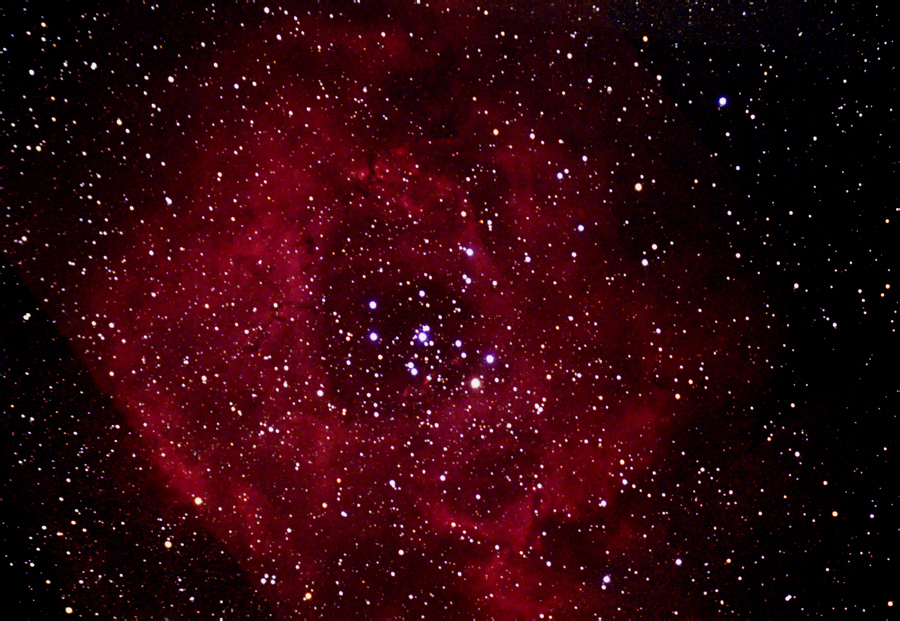NGC2237 & NGC2244 - THE ROSETTE NEBULA AND GALACTIC CLUSTER
SOUTHERN NEW ENGLAND - USA

|
NGC2237 & NGC2244 - THE ROSETTE NEBULA AND GALACTIC CLUSTER SOUTHERN NEW ENGLAND - USA |
|
|
| Processing Data: | Object Info: |
| Negatives - December 2001 and January 2002 | The
area around the Rosetta Nebula is rich in NGC designations, including the
open cluster NGC224, which highlights the central region of the Rosetta
Nebula. The regions of the nebular itself is composed of NGC designations
NGC2237, 2238, 2239 and 2246. The nebula is considered to be located in
the constellation Monoceros, although it is actually located in the dark
region between Monoceros and the constellation Orion. The Rosette is large
and diffuse, and considered a rather difficult object to detect in smaller
telescopes, indeed, it may actually be easier from dark skies to view with
binoculars due to it's rather large angular size.
|
| Meade 5" ED Refractor F/9 | |
| 216XT Autoguider | |
| Pentax K1000 Body | |
| Kodak PPF 400, Unhypered | |
| 7 x 50 min. | |
| Image Stacking in Picture Window | |
| Digital Enhanced (curves and color balance) in Photoshop | |
| Processing Info: These
were my first negatives shot in close to 2 years. This was also my last
roll of PPF 400, which I happened to find in my desk in the basement,
kept uncooled 2 years beyond expiration. I took 33 frames of the
Rosette, of which the first 25 were mis-framed at NGC2237, instead of
2244. As a result, I only had 3 useable shots from the correctly framed
shots, and also used an additional 4 frame stack which I salvaged from
the mis-framed shots, and composited them.
I used the latest in Astro-Processing
techniques including judicious use of Levels early in the pre-stack
process, Mike Cook Film Grain Noise Reduction and Blending method
composing in Picture
Window. I avoided using BGSmooth DNR and NeatImage since central core 6
image stack was so smooth.
|
|
| Object Details Courtesy Burnham's Celestial Handbook, Robert Burnham, Jr. (1978 Dover Publications) | |